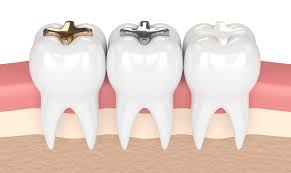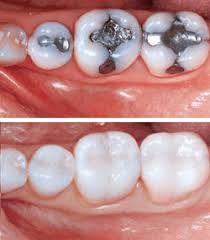FILLINGS
Patients frequently believe that if their tooth isn’t hurting, they don’t require a filling. However, by the time your tooth hurts, the condition has escalated in cost and difficulty to resolve.Sometimes it ends up of getting crowns or bridge.
Dentists advise regular check-ups to catch problems early. A cavity starts when acid-secreting bacteria cause microscopic damage to the tooth’s surface, and the bacteria continue to work their way further and deeper into the tooth, destroying it from the inside out. Fillings are made of a variety of materials, which your dentist will discuss and recommend.

Types of Dental Fillings
Composite fillings are tooth-colored plastic and glass fillings that are used to heal decaying teeth. This long-lasting filling material involves less tooth structure removal, resulting in a smaller filling than amalgam. The main benefit of composite fillings in you is the appearance of them..
Many patients choose this alternative for a variety of reasons, including aesthetics, the avoidance of metallic restorations, and mercury concerns. At a Turkish dentist, composite fillings mix in with the surrounding tooth structure for a natural appearance.
The Procedure
The following are the stages involved in installing a composite filling in a tooth:
1. The tooth is isolated by your dentist.
2. A drill or air abrasion is used to remove the infected area of the tooth.
3. The composite resin is applied to the opening layer by layer.
4. A specific light is utilized to solidify the layers of the composite resin substance.
5. Your dentist will shape the composite filling near you to look like a genuine tooth after it has been filled.
